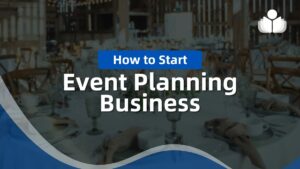How to Start Your Private Peer Coaching Group
Introduction
Purpose of This Information
The following information and resources are focused on the most important guidelines and materials for you to develop a basic, practical and successful PCG. The information is intended for anyone, although it helps if you have at least some basic experience in working with groups.
All aspects of this offering are free, including guidelines and materials. The offering is sponsored by ActionLearningSource (ALS) as a free community service to citizens around the world. The founders of ALS have been providing long-lasting, and highly successful peer coaching groups (PCGs) since 1995.
The following basic information is adapted specifically from the peer coaching group format of Authenticity Consulting’s Authenticity Circles. Those wanting more advanced information and materials to customize peer coaching groups for specific applications and/or cultures should consider ALS’s advanced group coaching. The information on this page is provided in accordance with the terms of a creative common license.
What is a Peer Coaching Group (PCG)?
People have been solving complex problems and achieve challenging goals for 1,000s of years — by counting on each other. They form close communities of support in which each member gets help from the others.
Help can be in the form of ongoing advice and materials — and especially thoughtful and respectful questions (coaching). This is most useful when people also share support and accountabilities to actually apply the help that they get from others in the group.
Getting that kind of help is much easier than you might think. Here is how you can conveniently arrange that help, with even one or two other people — and it can done over the Internet. In your group, you all are equals — or peers — in coming together to support each others progress and learning.
Would You Benefit From a Private PCG?
History and research have shown there there are many benefits of PCGs, including for personal, professional and organizational development. This webpage is especially about using them for the personal development of yourself and your group members. PCGs are useful for each group member to work on a current and important priority that each member selects themselves. For example, do you need help with:
- Getting ongoing support to solve a problem or achieve a goal?
- Responding to the coronavirus crisis?
- Better managing your time and stress?
- Achieving a personal or professional goal?
- Improving a certain skill?
- Applying guidelines from a favorite article?
- Others?
The PCG framework has been used many times over many years to help members solve problems, achieve goals and cultivate confidential networks. As long as the members are caring and curious about each other, the results from the framework can be transformative.
PCGs are based on a powerful peer-based process called Action Learning that is used around the world in numerous types of organization. Other benefits of PCGs are listed at Results from Action Learning
First, Watch This Video to Orient You to PCGs
The very practical, 30-minute video An Overview of Action Learning: Peer Coaching Group Format teaches you all about a common format of a peer coaching group, including about:
- The peer coaching group process
- How to select a priority to get coached on in your group
- Doing the coaching in the meetings
- The types of useful follow-up after each meeting
- Useful activities to do between meetings
- How to know if you are “doing it right”
- Where to learn more
The video refers to “Circles,” which is a common term for peer coaching groups. The video also refers to two key tools for conducting a successful peer coaching group meeting, including the Authenticity Circles Quick Reference and the Session Management Form that each member of a group gets. You might print out those tools to have available as the video references them. A PDF of the slides for the video can also be downloaded from An Overview of Action Learning: Peer Coaching Group Format.
Then, Draft the Initial Design of Your PCG
Key Considerations
- What is the common goal or challenge that each of you wants to address?
- How many members will you have (Four to five is typical, but no more.)
- How many group meetings will you have? (Six is typical.)
- How long will your meetings be? (Ninety minutes is typical. See the suggested agenda below.)
- How often will you meet? (Every two to four weeks is typical.)
- How will you communicate among yourselves (in-person or virtual)?
- Who will facilitate each meeting? The Circles Quick Reference includes the tasks of the facilitator.
Consider These Ground Rules
These ground rules have been used in many meetings. They are listed in the Circles Quick Reference that each member gets. They are mentioned at the beginning of each meeting.
- Start and end on time.
- Confidentiality is assured.
- Keep the session process highly focused.
- Manage your time slot; help the Circle to help you.
- All opinions are honored.
- One can disagree with other members and the facilitator.
- Contact the facilitator and other members if you cannot attend the next session.
Then, Organize and Train Your Group Members
- Select at least one additional person who might have a similar interest or need as you.
- Share this web page with them.
- Encourage them to see the video.
- Ask them if they have any questions or suggestions about the information on this page.
- Ask them if they would like to try forming your own peer coaching group. It doesn’t have to be perfect. You can improve it as you go along.
- You all could plan your progress in the group by each of you having a personal Learning Plan.
- Hold your first 90-minute meeting in which all of you:
- Share your confidential contact information among each of you.
- Share your impressions of the information in the video.
- Share your introductions.
- Schedule your next six 90-minute meetings.
Consider This Agenda for Each Group Meeting
The recommended step-by-step agenda is itemized in the section “Circle Session Agenda” in the Circles Quick Reference that each member gets. Notice that peer coaching groups are not trainings or discussion groups. Instead, they are structured meetings intended to meet the current needs of each member of the group.
Opening (7 minutes)
-
- Review values and ground rules in the Circles Quick Reference
- Each member selects a priority to get coached on.
- Do a brief check in from each member.
- Quickly share any materials suggested in the previous meeting.
- Review guidelines for coaching and coaching others (in the Circles Quick Reference).
Sharing Help (up to 75 minutes)
In round-table approach, each member gets 15 minutes to:
-
- Share the status of any actions that they took from the previous group meeting, and what they learned from those actions.
- Share a current priority that they’d like to get help with.
- Get help from other members in the form of advice, materials and especially thoughtful questions.
- Select at least one realistic action to take toward addressing their priority.
With four members instead of five, each member would get 18 minutes. Even though coaching sessions are 15-18 minutes, all members learn durig the entire meeting.
Closing (8 minutes)
- Each member documents learning and results from the meeting.
- Members optionally share out loud what they have learned.
- Each member shares out loud, a rating of the quality of that meeting from “1” (very low) to “5” (very high), and what could be done to improve future meetings.
- Verify date and timing of next meeting.
Consider These Actions for Members Between Meetings
Each group member conducts the action(s) that they selected when they were coached. They also might share questions, answers and suggestions to help members address their priorities and improve their meetings. They also update their Learning Journals. Here is a sample Learning Journal in which each member can document their own new learning from the meetings.
Frequently Asked Questions
How Do I Know What to Get Help With in a Meeting?
Choose whatever priority is most important to you now. You are the expert at what is most important to you. Do not worry about how small or large the priority is.
How Do I Help a Group Member (Who is Getting Help Now)?
You might ask the member who is getting help during the “Sharing Help” in the meeting, “What kind of help would be most useful to you now? Advice? Materials? Questions? Brainstorming?”
How Do I Know What Actions to Take Between Meetings?
The actions that you take (as a result of the help that you get from other group members) is up to you to select. However, it should be an action that is realistic to accomplish before the next meeting.
General Resources
- About Facilitation
- About Meeting Management
- How to Improve Your Listening Skills
- Skills in Questioning
- Numerous Activities for Learning
Forming Your Own Study Groups
The above agenda for a support group could be slightly modified to form a study group, as well. During each member’s time in the meeting, he or she can get help, especially with understanding and applying the content from some source of expert knowledge about a topic, for example, a lecture from a class, a chapter from a book, or content from a podcast. Here is more information about forming study groups.
- Five Tips for an Effective Study Group
- How to Form a Study Group
- How to Form a Successful Study Group: Tips and Strategies.
- How To Create an Effective Study Group
Forming Your Own Coaching Group
The above agenda could be modified to form a peer coaching group, as well. During each member’s time in the meeting, he or she can get help, especially in the form of thoughtful questions about the member’s perceptions, assumptions and conclusions.
- Ultimate Guide to Coaching Groups
- Effective Group Coaching 101
- Group Coaching: Benefits and Key Characteristics
- All About Coaching
For the Category of Personal Development:
To round out your knowledge of this Library topic, you may want to review some related topics, available from the link below. Each of the related topics includes free, online resources.
Also, scan the Recommended Books listed below. They have been selected for their relevance and highly practical nature.
 Sections of this topic
Sections of this topic
















